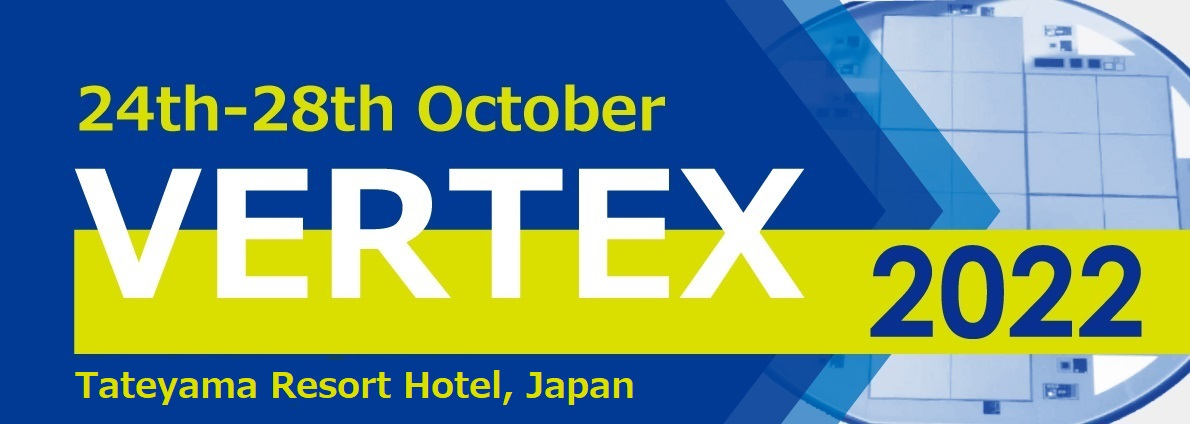Conveners
Running Detectors: (I)
- Kazuhiko Hara (University of Tsukuba (JP))
Running Detectors: (II)
- Andrey Starodumov (Rudjer Boskovic Institute (HR))
Running Detectors: (III)
- Andrey Starodumov (Rudjer Boskovic Institute (HR))
The CMS pixel tracker provided high-quality physics data during the LHC Run 2, finishing with a detector live fraction of 95% and hit efficiency of >99% in all but the innermost layer. However, issues encountered during Run 2 - in particular DCDC converter failures during power cycles to reset stuck TBMs - necessitated a thorough refurbishment of the detector during LS2. The innermost layer of...
The tracking performance of the ATLAS detector relies critically on its 4-layer Pixel Detector. As the closest detector component to the interaction point, this detector is subjected to a significant amount of radiation over its lifetime. By the end of the LHC proton-proton collision RUN2 in 2018, the innermost layer IBL, consisting of planar and 3D pixel sensors, had received an integrated...
ALICE is one of the experiments at the CERN Large Hadron Collider (LHC) studying nuclear matter at extreme conditions of temperature and pressure. The LHC Run 3
will start officially in July this year after a shutdown of more than two years to allow for the upgrade of both the accelerator and the experiments. In Run 3, Pb--Pb
collisions will be performed at an unprecedented centre of mass...
The Belle II experiment at the super KEK B factory (SuperKEKB) in Tsukuba, Japan has been collecting $e^+e^-$ collision data since March 2019. Operating at a record breaking luminosity of up to $4.7 \times 10^{34}\, \textrm{cm}^{-2}\, \textrm{s}^{-1}$, data corresponding to $424\, \textrm{fb}^{-1}$ has since been recorded. The Belle II Vertex Detector (VXD) is central to the Belle II detector...
The Belle II experiment is taking data at the asymmetric SuperKEKB collider, which operates at the Y(4S) resonance. The vertex detector is composed of an inner two-layer pixel detector (PXD) and an outer four-layer double-sided strip detector (SVD). The SVD-standalone tracking allows the reconstruction and identification, through dE/dx, of low transverse momentum tracks. The SVD information is...
LHCb is a forward spectrometer at LHC (CERN), aimed to study CP-violation in b-quark physics, but proven during the 2011-2018 data taking years to be a general purpose spectrometer with many exciting measurements. The Vertex Locator (VELO) is a silicon pixel tracking detector in the heart of the LHCb spectrometer. As a higher instantaneous luminosity of 2*10^{33} s^{-1} cm^{-2} is expected...
The LHCb experiment is a forward spectrometer at the Large Hadron Collider designed to study decays of beauty and charm hadrons. After a very successful data taking phase, an upgraded detector is constructed and currently being commissioned with the goal of taking data at a luminosity of $2 \times 10^{33} \mathrm{cm}^{-2} \mathrm{s}^{-1}$. A key feature is the implementation of a flexible...
The CMS silicon strip tracker consisting of 15000 silicon modules with a 200 m2 active area has been successfully taking data in LHC Run 1 and Run 2. After the second long shutdown period from the end of 2018, the detector resumed operations in Summer 2021 and will be operational till the end of LHC Run 3, before the HL-LHC upgrade. In this presentation, the performance of the detector during...
The ATLAS SemiConductor Tracker (SCT) had been maintained during the
long shutdown 2 (LS2) and restarted operations in LHC Run-3. As reported in
the previous VERTEX conference, the SCT successfully operated in LHC Run-2
(2015-2018) which came with high instantaneous luminosity and pileup
conditions that were far in excess of what the SCT was originally designed to
meet. The first...
FASER is a new experiment designed to search for new light weakly-interacting long-lived particles (LLPs) and study high-energy neutrino interactions in the very forward region of the LHC collisions at CERN. The experimental apparatus is situated 480 m downstream of the ATLAS interaction-point aligned with the beam collision axis. The FASER detector includes four identical tracker stations...
The anomalous magnetic moment of muon, muon g-2, has been precisely measured by the experiments at BNL and FNAL, and there is a 4.2 sigma discrepancy between the measurement and the prediction. A new experiment to measure the muon g-2 is planned at J-PARC, based on a different strategy. A low emittance muon beam is stored in a compact storage magnet, and spin precession of muons is...
